5. Dickens in America.
In the first half of the 19th century, a small number of literary travelers crossed the Atlantic in either
direction, to write books on their return describing what they saw. One of these was Charles Dickens, who
arrived in Boston in January 1842, a few days shy of his 29th birthday. Already a publishing phenomenon at home,
he was hailed in America like a rock star. We look at the reasons for his success in Britain, then retrace his
steps in the US with the help of actress Miriam Margolyes.
In the second hour, we look at some poetry from each country, and sample videos based on novellas or short
stories. Although there were few writers in Britain close to Dickens in style or subject, and virtually none in
America, we can get somewhere by focusing on one particular Dickensian quality that would become something of an
American specialty: his fascination with the dark side of the human psyche. rb.
The script, videos, and images will be posted immediately after class.
TO THINK ABOUT
These are shots from the same production of an opera based on a work by Henry James; you can click on the images
to enlarge them. Think about the atmosphere that each scene creates. Then click the link below the images for more
detailed questions.
Here are brief bios of the major artists considered in the class, listed in order of birth.
An alphabetical listing of artists for the whole course can be found at the
BIOS link on the syllabus page.
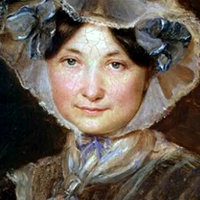 |
Frances Trollope, 1779–1863. English writer.
Now eclipsed by the fame of her novelist son Anthony, Fanny Trollope was a highly regarded writer in her own right. The book that first caught the attention of the public was Domestic Manners of the Americans that she published in 1832, following the failure of a four-year attempt to settle in the American midwest.
|
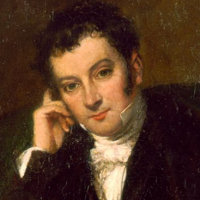 |
Washington Irving, 1783–1859. American writer and diplomat.
Irving was the writer of stories featuring such characters as Ichabod Crane and Rip van Winkle. He wrote a major biography of George Washington, and in later life served as US Ambassador to England and Spain. He was one of the first American authors to command an English readership, and to makea living from his writing.
|
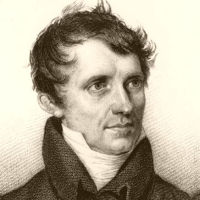 |
James Fenimore Cooper, 1789–1851. American novelist.
Cooper grew up in Cooperstown NY, a community founded by his father. After being expelled from Yale, he served first as a merchant seaman and then in the US Navy. The reputation of his large literary output, once much admired both at home and abroad, now rests mainly on his five Leatherstocking Tales, especially The Last of the Mohicans (1826).
|
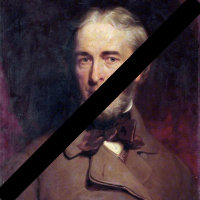 |
John Quidor, 1801–81. American painter.
WIkipedia: Quidor was an American painter of historical and literary subjects. He has about 35 known canvases, most of which are based on Washington Irving's stories about Dutch New York. [The image is period-appropraate placeholder; I can't find his portrait.]
|
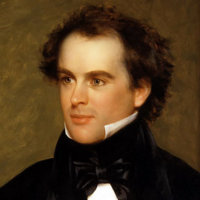 |
Nathaniel Hawthorne, 1804–64. American novelist.
His 1850 novel The Scarlet Letter is an American classic, addressing (among other things) the role of religion and personal freedom in American life. Many of his earlier stories have similar depths of symbolism and moral enquiry. He also wrote A Wonder-Book for Girls and Boys (1851), consisting entirely of retellings of Greek myths.
|
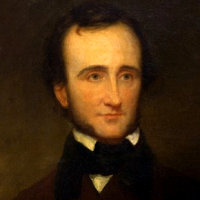 |
Edgar Allan Poe, 1809–49. American writer.
Poe was known for his poetry and especially for his short stories which developed the American Gothic tradition of the macabre and virtually invented the literary mystery. He was also the American author of his time most in tune with European practice, especially in France, where he was very popular. He was, however, continually wrestling with drug addiction, and died at the age of 40.
|
 |
Alfred Lord Tennyson, 1809–92. English poet.
Known for his lyrical poems and his Arthurian epic Idylls of the King, Tennyson was appointed Poet Laureate to Queen Victoria in 1850 and held the position until his death. He adopted his characteristic tone of elegaic retrospection relatively early, and carried it through a long career that established him as the most resonant voice of the Victorian era.
|
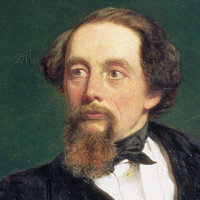 |
Charles Dickens, 1812–70. English Novelist.
Dickens wrote 15 novels, several novellas, and numerous stories. Many of these were originally published in serial form, enabling him to build a large and eager readership, and to shape his work in response to public opinion. He also edited several magazines over the course of his life, and sponsored the work of other writers. A lifelong reformer, he increasingly devoted his time to political writing, lecture tours, and readings of his own work on both sides of the Atlantic. [The image is a detail of a portrait by Frith.]
|
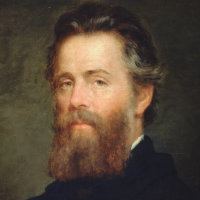 |
Herman Melville, 1819–91. American writer.
Melville's Moby-Dick (1851) is a landmark in literature (not just in America) for its scope, its wealth of detail, and the apocalyptic scale of its vision. Although he wrote nothing else of this size, his earlier novels based on his time in the South Seas, his long short stories, and above all his posthumously published Billy Budd show a deep penetration into character and morality.
|
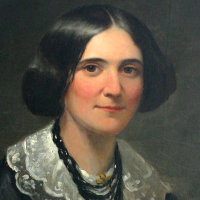 |
Alice Cary, 1820–71. American writer.
Although receiving little formal education, Alice and her younger siser Phoebe (b.1824) began publishing in local newspapers in their teens, and in 1849 moved to New York where they established a literary salon. She also wrote three novels and three books of short stories.
|
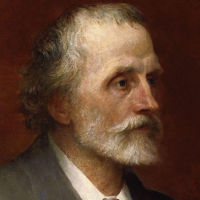 |
George Meredith, 1828–1909. English poet and novelist.
Meredith was a respected poet and relatively minor novelist of the Victorian era. His autobiographical sonnet squence Modern Love (1862), however, broke new ground in telling of the break-up of a marriage in psychologically realistic detail.
|
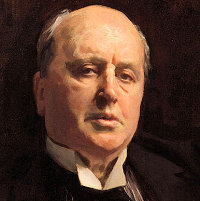 |
Henry James, 1843–1916. American-English novelist.
Born in New York, James traveled a lot with his family as a child, and settled in England in 1869. Many of his novels concern American expatriates in Europe, and the later ones especially have been hailed as the bridge to Modernism. His novella The Turn of the Screw (1898) is one of the most influential ghost stories of all time.
|
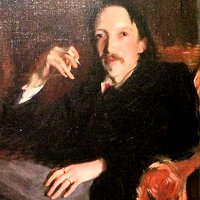 |
Robert Louis Stevenson, 1850–94. Scottish writer.
Stevenson qualified as a lawyer in Edinburgh, but made his living by writing instead. A frequent traveler (often occasioned by the needs of his weak lungs), he lived at various times in Southern England, continental Europe, the United States, and finally Samoa. Many of his works, some of them for children like Treasure Island (1883), involve travel and adventure, though his horror at the exploitation of the South Seas turned him from romance to realism in his last years.
|
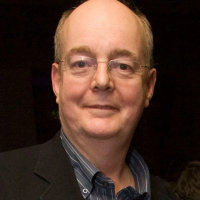 |
David Edgar, 1948– . English playwright.
Best known for his 9-hour adaptation of Dicken's Nicholas Nickleby for the Royal Shakespeare Company in 1980, Edgar has enjoyed a long career writing political or socially-activist plays that have been performed everywhere from the National Theatre to lunchtime street venues.
|










































